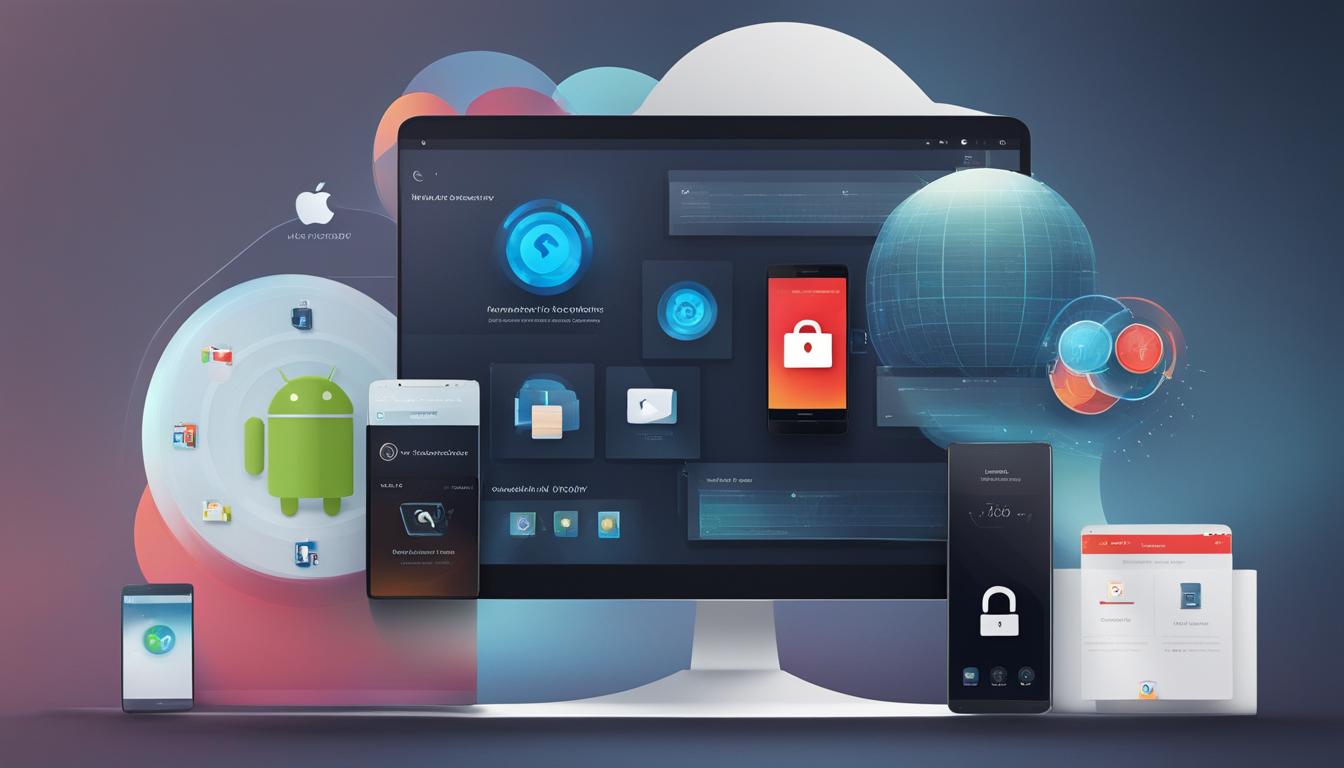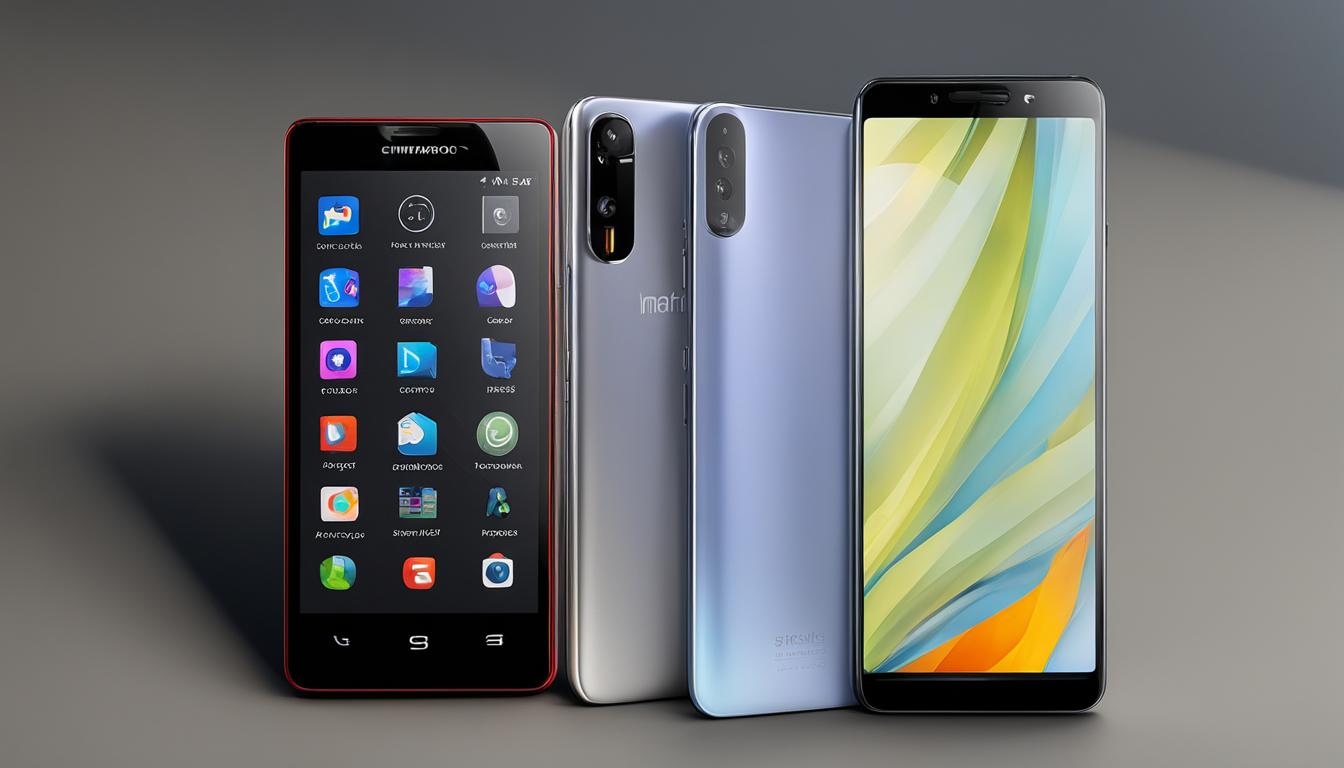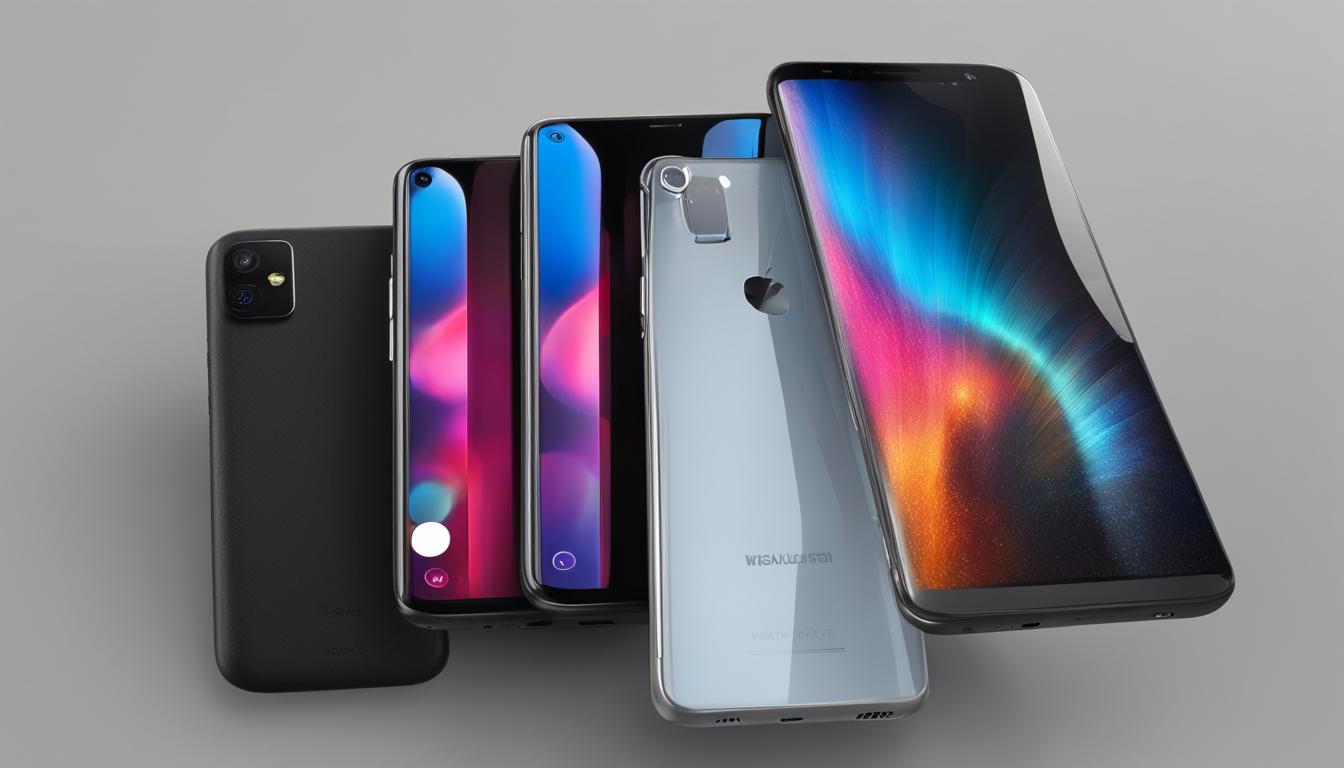Mobile security has become increasingly important for smartphone users, considering the sensitive data they store. With the rise of phone-centric technology, the risks associated with malware attacks, cyber scams, and data breaches have also increased. Trojans are the most common mobile threats, accounting for over 95% of mobile malware. Among mobile operating systems, Android, being the most popular platform, is particularly targeted for mobile banking attacks. However, smartphone developers are continually working to enhance security measures.
Key Takeaways:
- Android and iOS are the two major mobile operating systems in the market.
- Mobile security threats include malware attacks, cyber scams, and data breaches.
- Trojans are the most prevalent type of mobile malware, with Android devices being the primary targets.
- Android security measures include keeping the OS updated and avoiding unknown apps.
- iOS provides a closed system, strict app review process, and regular updates, making it more secure “out of the box.”
The Scope of Mobile Security Threats
With the widespread adoption of smartphones and the increasing interconnectivity of devices through the Internet of Things (IoT), mobile security has become a critical concern for users and businesses alike. The ever-evolving landscape of mobile security threats poses significant risks, including malware attacks, cyber scams, data breaches, and security weaknesses.
Trojans, a type of malicious software, are the most prevalent mobile security threats, accounting for over 95% of all mobile malware. These insidious Trojans can compromise the security of both Android and iOS devices, but Android devices are particularly targeted, making up over 98% of mobile banking attacks.
To combat these threats, it is crucial for mobile users to stay informed about the latest security measures and take proactive steps to protect their devices. By understanding the scope of mobile security threats, users can make informed decisions and implement appropriate security measures to safeguard their data and privacy.
| Mobile Security Threats | Impact |
|---|---|
| Malware Attacks | Potential theft of sensitive information, financial loss, and unauthorized access to personal data. |
| Cyber Scams | Identity theft, phishing attacks, and financial fraud targeting unsuspecting users. |
| Data Breaches | Exposure of personal and sensitive data, leading to potential identity theft and financial loss. |
| Security Weaknesses | Vulnerabilities in operating systems and apps that can be exploited by hackers. |
| Trojans | Stealing sensitive information, banking fraud, and unauthorized access to devices. |
As the mobile landscape continues to evolve, staying vigilant and proactive in protecting mobile devices is essential to mitigate the risks associated with these mobile security threats.
Android OS Phone Security
Android’s security measures have been a topic of debate due to its open-source nature and the potential for security vulnerabilities. However, Google has been actively working to enhance Android security and provide users with a safer experience. Let’s take a closer look at some of the key aspects of Android security.
Android App Security
One of the main concerns regarding Android security is the risk of installing malicious apps. To mitigate this risk, Google has implemented various security measures for app developers and users. The Google Play Store, the primary app marketplace for Android devices, employs a comprehensive review process to ensure that apps meet specific security standards before being made available for download. This screening process helps to minimize the presence of potentially harmful apps on the platform.
Additionally, Android devices support the installation of apps from third-party sources, which can increase the risk of downloading malicious software. However, users can enable a setting that restricts app installation to the Google Play Store, reducing the chance of inadvertently installing harmful apps.
Android Updates and Security Patches
Regular software updates and security patches are crucial for maintaining the security of any operating system, including Android. Google releases frequent updates to enhance security features and address any discovered vulnerabilities. However, the availability of these updates can vary across different Android devices due to the fragmentation of the ecosystem. Android devices from different manufacturers may not receive updates at the same time or in a timely manner.
To ensure maximum security, it is important for Android users to regularly check for and install the latest updates provided by their device manufacturers. These updates often contain critical security patches that address known vulnerabilities and protect against emerging threats.
Android for Work and Samsung Knox
For users who require additional security features for their work-related activities, Google offers Android for Work. This feature allows users to separate their personal and work profiles, providing a secure environment for business applications and data. Android for Work incorporates advanced security features such as data encryption, remote data wipe, and stronger authentication protocols.
In addition, Samsung devices offer an extra layer of security through Samsung Knox. Knox is a security platform that provides hardware and software-based protection for Samsung devices. It includes features such as secure booting, data encryption, containerization of work and personal data, and real-time malware scanning.
| Android Security Features | Benefits |
|---|---|
| Google Play Store review process | Minimizes the presence of malicious apps |
| Regular updates and security patches | Addresses vulnerabilities and protects against emerging threats |
| Android for Work | Provides a secure environment for business applications and data |
| Samsung Knox | Adds an extra layer of hardware and software-based protection |
Apple iOS Phone Security
When it comes to mobile security, Apple’s iOS is known for its robust protective measures. The closed ecosystem and stringent app review process of the Apple App Store contribute to a higher level of security out of the box. Moreover, regular iOS updates and security patches ensure that Apple devices remain secure throughout their lifespan, providing a safeguard against emerging threats.
One of the key advantages of iOS security is the limited access to the phone’s source code. With its closed nature, it is challenging for malware to infiltrate iOS devices. This reduces the risk of malicious apps or software compromising the security and integrity of the device and the user’s data.
Another aspect of Apple’s security strategy lies in device integration. By controlling both hardware and software components, Apple can optimize security features and implement robust hardware-based security measures. This integration strengthens the security posture of iOS devices and enhances their resistance to various cyber threats.
In summary, Apple iOS offers a high level of security for iPhone users. The closed ecosystem, regular updates, limited access to source code, and device integration all contribute to a secure user experience. However, it is important for users to remain vigilant and adopt additional security measures such as strong passwords, two-factor authentication, and regular backups to further protect their devices and personal data.
iOS Security Features:
- Strict app review process in the Apple App Store
- Regular iOS updates and security patches
- Limited access to source code
- Device integration and hardware-based security
iOS Security Advantages:
- Higher level of security “out of the box”
- Reduced risk of malware infiltration
- Optimized security features
- Enhanced resistance to cyber threats
| Security Aspect | Apple iOS | Android |
|---|---|---|
| App Review Process | Strict review process in the Apple App Store | Less stringent review process in the Google Play Store |
| Source Code Access | Limited access to source code | Open-source nature allows more access to source code |
| Updates and Patches | Regular iOS updates and security patches | Varies depending on device manufacturers and carriers |
| Device Integration | Control over hardware and software components | Varies depending on device manufacturers |
Windows OS Phone Security
In this section, we will discuss the security aspects of Windows OS on mobile devices, focusing on Windows Phone. While Windows Phone has had its share of security weaknesses, it is important to note that Microsoft has made efforts to improve security in its newer versions, such as Windows 10 Mobile and the upcoming Windows 10X. Let’s take a closer look at the key aspects of Windows OS phone security.
Windows OS Updates
Regular software updates play a crucial role in maintaining the security of any operating system, including Windows Phone. Microsoft has been diligent in providing updates to address security vulnerabilities and enhance the overall security of their mobile devices. However, it is worth mentioning that older versions of Windows Phone, such as Windows Phone 8.1 OS and Windows RT, are no longer supported with updates or native app support. This lack of updates for outdated models may expose them to security threats.
Windows Phone Support
Another aspect to consider when evaluating the security of Windows Phone is the level of support provided by Microsoft. While Windows 10 Mobile is still supported, the future of Windows Phone remains uncertain with the introduction of Windows 10X, a new version of Windows designed specifically for dual-screen devices. This transition may impact the availability of security updates and support for older Windows Phone models, which could leave them more vulnerable to security weaknesses.

Security Weaknesses
Windows Phone has faced criticism for security weaknesses in the past. These weaknesses may include vulnerabilities that can be exploited by hackers or limitations in security features compared to other mobile operating systems. While Microsoft has made efforts to address these issues, it is essential for Windows Phone users to stay vigilant, keep their devices updated, and follow best practices for mobile security to mitigate potential risks.
In conclusion, Windows OS phone security, particularly for Windows Phone, has its strengths and weaknesses. While Microsoft has taken steps to enhance security through updates and support, the discontinuation of older models and the transition to Windows 10X may introduce uncertainties. Windows Phone users should remain proactive in implementing security measures to protect their devices and personal data.
BlackBerry OS Phone Security
BlackBerry devices have long been known for their strong security measures, making them a popular choice for business users. However, the BlackBerry 10 and BlackBerry OS platforms have become outdated over the past decade, with limited support and no recent updates. This lack of ongoing development poses security risks to older BlackBerry devices.
One of the main concerns with BlackBerry OS phone security is the discontinuation of BlackBerry phone hardware. Without new devices being released, users are left with outdated models that may have security vulnerabilities. Additionally, the prevalence of zero-day exploits, which are vulnerabilities that are unknown to the software developer, presents another risk to BlackBerry device security.
MDM and BlackBerry Hardware
BlackBerry devices are often praised for their integration with Mobile Device Management (MDM) solutions, which allow businesses to have better control over security policies and device management. However, without regular updates and support, the effectiveness of these security features diminishes over time.
BlackBerry OS Updates
Another concern is the lack of recent BlackBerry OS updates. Without regular updates, security vulnerabilities may go unpatched, leaving devices more susceptible to attacks. The discontinuation of support and updates for BlackBerry 10 and BlackBerry OS means that the security of these devices is no longer a priority for the company.
| BlackBerry OS Phone Security | Issues |
|---|---|
| Outdated hardware | Limited support and potential security vulnerabilities |
| Zero-day exploits | Risks due to unknown vulnerabilities |
| Discontinued support | Lack of updates and patching for security vulnerabilities |
Mobile Operating Systems (OS) – Pros and Cons
When it comes to choosing a mobile operating system, users often find themselves torn between Android and iOS. Each OS has its own set of advantages and disadvantages, which need to be carefully considered before making a decision. Let’s take a closer look at the pros and cons of both Android and iOS in terms of device security and privacy settings.
Android Pros and Cons
Android offers users greater configurability and control over privacy settings, allowing them to customize their devices according to their preferences. This flexibility is a major advantage for users who value personalization and customization. However, Android’s open-source nature and the wide variety of app sources can make it vulnerable to security threats. Users need to be cautious about downloading apps from unknown sources and should regularly update their devices to ensure they have the latest security patches.
iOS Pros and Cons
iOS, on the other hand, provides a more locked-down ecosystem, which contributes to its reputation for enhanced security. Apple’s strict app review process ensures that only trustworthy apps are available in the Apple App Store, reducing the risk of malware and other security threats. Additionally, iOS devices receive regular updates and security patches, ensuring that users have the latest protections. However, iOS’s closed nature can limit some customization options, making it less flexible compared to Android.
Table: Android vs. iOS Security Pros and Cons
| Aspect | Android | iOS |
|---|---|---|
| Customizability | High | Low |
| App Store Security | Less strict | More strict |
| Updates | Variable | Regular and timely |
| Vulnerability | Higher due to open-source nature | Lower due to closed ecosystem |
Ultimately, the choice between Android and iOS depends on individual preferences and priorities. Android offers more customization options, while iOS provides a more secure and controlled environment. It’s important for users to consider their own needs, weighing the advantages and disadvantages of each OS, before making a decision. Regardless of the chosen OS, users should always prioritize device security by regularly updating their devices, using strong passwords, and being cautious of potential security threats.
Conclusion
When it comes to mobile OS security, Android and iOS both have their strengths and weaknesses. iOS is often considered more secure due to its closed system and strict app review process. On the other hand, Android has made significant efforts to improve security over the years.
Ultimately, the level of security on a mobile device depends on user behavior, device updates, and the adoption of security measures. Users should prioritize security when selecting a mobile operating system and take necessary precautions to protect their devices and data.
To enhance mobile OS security, users can consider installing antivirus software and using VPNs to encrypt their internet connections. Regularly updating the device’s operating system is also crucial, as it ensures the latest security patches are applied.
Whether it’s Android or iOS, smartphone users play a vital role in safeguarding their personal information. By staying aware of security risks and taking proactive steps, users can enjoy a more secure mobile experience.
FAQ
What makes mobile security crucial for smartphone users?
Mobile security is important because smartphones store sensitive data, and the growth of phone-centric technology has increased the risk of malware attacks, cyber scams, and data breaches.
What are the most common mobile threats?
Trojans are the most prevalent type of mobile malware, accounting for over 95% of such threats.
Which is the primary target for mobile banking attacks?
Android devices are the primary target for mobile banking attacks, as they make up over 98% of such attacks.
How can users enhance the security of their Android devices?
Users can enhance the security of their Android devices by keeping the operating system updated and avoiding unknown apps. Additionally, recent Android devices support Google’s Android for Work and Samsung’s Knox security technology.
Why is Apple’s iOS considered more secure?
Apple’s iOS is tightly controlled by Apple, with a strict app review process and regular updates and security patches. The closed ecosystem also limits access to the phone’s root coding, making it difficult for malware to infiltrate iOS devices.
Are Windows Phone devices secure?
Windows Phone has a history of security weaknesses and limited support. Older models are no longer supported with updates or native app support, making them vulnerable to security threats.
What are the security risks associated with older BlackBerry devices?
BlackBerry 10 and BlackBerry OS have become outdated, with limited support and no recent updates. The discontinuation of BlackBerry phone hardware and the prevalence of zero-day exploits make older BlackBerry devices susceptible to security risks.
How do Android and iOS compare in terms of security?
Android provides greater configurability and control over privacy settings, but is often criticized for weaker “out of the box” security. iOS, on the other hand, offers consistency and reliability with stricter control over the app ecosystem. The choice between the two depends on individual preferences for convenience and security.
What factors determine the level of security on a mobile device?
The level of security on a mobile device depends on user behavior, regular device updates, and the adoption of security measures such as antivirus software and VPNs.
How should users prioritize security when selecting a mobile operating system?
Users should prioritize security when selecting a mobile operating system and take necessary precautions to protect their devices and data.
 Skip to main content
Skip to main content


